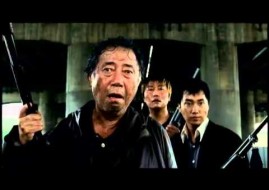Reel Rewind
2000: A year of profits and accolades for Korean films.
[Korea Now]
The incredible success of Korea’s film industry in 1999 was called many things – historic, miraculous, surprising – but not trendsetting. After all, “Swiri,” the source of everyone’s wonders, was believed to be a one-time deal.
But things took a dramatic turn last year as a “Swiri” clone, “Joint Security Area” by Park Chan-wook, came close to catching up with its competitor’s legacy. Shocking developments in other areas also helped make the year 2000 a very impressive sequel to 1999.
The biggest story took place at the box office. As of Dec. 17, Korean movies controlled a 32.8 percent share of the local film market, falling a little short of 1999’s 35.8 percent, but still offering convincing proof that 1999 was no fluke.
Overall, 56 movies were made, with the top grosser being “Joint Security Area,” which drew 2.43 million as of Dec. 27, just a hair behind last year’s record-setter “Swiri,” which racked up 2.45 million in 1999.
Most noteworthy about 2000’s movie market was the high number of blockbusters. After “Swiri”‘ ran up 3.5 billion won in production costs in 1999, there seemed to be a silent understanding in the market that success required big bucks.
The year’s first blockbuster was the summer’s biggest hit, “Pichonmu,” which cost 4 billion won. “JSA” followed, spending 4 billion won, a chunk of which went to building a replica of the Panmunjom truce village. Then the winter brought “Libera Me” and “The Legend of Gingko,” which cost 4.5 billion won each to make.
Whether these mega projects were successful, though, depends on who you ask. Theater owners had no complaints as millions rushed to see how all the money had been spent. Critics sniped that the Korean film industry was suffering an identity crisis: “It thinks it’s Hollywood,” more than one critic said.
A more severe judge proved to be the international film festivals, which passed over these high-cost films for more low-profile ones, demonstrating yet again that box office and critical success are very separate issues.
Director Im Kwon-taek’s masterpiece, “Chunhyang” – which more or less bombed at home, drawing only 150,000 – was invited to compete at Cannes. It is the first Korean film to receive that distinction. Director Bae Chang-ho’s “My Heart,” another local bomb, received awards at Benodet and Udine Far East Film 2000. An independent film, director Kim Ki-dok’s “The Isle” became the third Korean film to compete at Venice.
Overall, 140 Korean films participated in 138 film festivals last year, (93 films went to 73 film fests in 1999), and 15 films won 22 awards (11 films won 14 awards in 1999).
Korean films’ performance abroad was highlighted by yet another achievement: two homegrown movies were contracted to open in theaters in the United States. “Nowhere to Hide” opened in New York and Los Angeles on Dec. 1, becoming the first Korean movie to be released for the general audience in the country. “Chunhyang,” which was also recently invited to compete at the U.S. Academy Awards, will join “Nowhere” this month.
Local films posted superb performances as exports, too. As of Dec. 11, the Korea Film Commission (KOFIC) said that total exports reached $6.98 million, an increase of over 100 percent from 1999’s $3.04 million. The total number of films exported was 38, which is 20 less than in 1999. This shows that each film in 2000 fetched a higher price. Also, these films went to a greater number of importing countries – 24, to be exact (11 in 1999).
The top importer of Korean films was Japan with 79 percent, $5.51 million, and the year’s biggest film export was “JSA,” which fetched $2 million from Japan, the highest price paid for a Korean movie to date.
KOFIC and domestic promoters’ efforts are cited as the chief reasons for this sharp increase in exports. Due to their endeavors, for example, “Swiri” was number one at the box office in Hong Kong at the end of 1999, and drew over 1 million in Japan.
The shift in power between two of the industry’s major film distributors also made significant news. Cinema Service was certainly a top firm, with “Nowhere to Hide,” “Attack on the Gas Station” and “Tell Me Something” under its belt. However, CJ Entertainment ruled the industry, obtaining the rights to release hits such as “American Beauty,” “Gladiator” and Korea’s own “JSA.”
Of course, nothing in the industry made bigger news than “JSA,” which is being called, at least by the public, the best film of the year. The tragic story about a friendship between South and North Korean soldiers at the Demilitarized Zone debuted on 120 screens in 110 theaters on Sept. 9, and became the biggest opener in history, drawing 215,000 viewers in its opening weekend. It recorded 1 million viewers after only 15 days, the 2-million mark on Oct. 26, and as of Dec. 27, has notched 2.43 million.
The success of this film is attributed to the combination of such factors as its uniquely Korean story, the timing (the release coincided with last summer’s South-North summit and family reunions), and the opening of new theaters.
The success of “JSA” also highlighted another trend that attests to how fast the industry is changing. It was produced by Myong Film, a company headed by Shim Jae-myong, a woman. More women are making an impact in the film industry, as also shown by Kim Mi-hee and Oh Jung-wan, heads of the Fun & Happiness production company and Bom, respectively.
News Source: Korea Herald >>


















